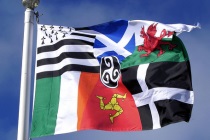Liverpool Monument to Patagonian Settlers
This news published by the Celtic League:
Liverpool Monument to Patagonian Settlers
NEWS FROM THE CELTIC LEAGUE
One of the least well publicised of our Celtic League branches is our Patagonian Branch (Argentina) which was established some years ago.
The Celtic League has long had connections with Argentina and for many years Alan Heusaff (former General Secretary) who administered the International branch told me that a goodly proportion of its substantial membership at that time were from Argentina (22 in the City of Buenos Aires alone).
Argentina like many parts of the Americas was subject to substantial migration from the Celtic countries in the nineteenth century.
We are all familiar with the great famine and post famine migrations from Ireland to the United States or the substantial migrations from the Scottish Highlands to Canada at the time of the clearances, but the Celtic involvement in South America is less well publicised.
Nonetheless, in the past two decades the process of publicising the Celtic-Argentine connection has grown considerably.
One of the best known historical figures in argentine history is Admiral William Brown, an Irishman always referred to as the father of the Argentine Navy. A museum to his honour is located in Foxford, Mayo, his birthplace. In April–June 2006 the Irish Naval Service patrol boat LÉ Eithne travelled to Buenos Aires to participate in commemorations of the sesquicentenary of Brown’s death, and brought back a statue of Brown to be displayed in Dublin. A year later over 200 people from Ireland travelled to the Argentine in relation to commemorative events surrounding the great man.
However, whilst Brown was historically pivotal in the creation of the Argentine State, the largest and arguably the most long lasting impact in the country was made by Celts from another country: Wales.
One hundred and fifty years ago the first party of about 200 Welsh people left Liverpool to establish a community in Argentinean Patagonia. There were subsequently further waves of immigration and eventually (between 1886 – 1911) almost 2,500 Welsh people had made the journey. They took their language and their customs settling first in the Lower Chubut Valley but eventually some moved inland to establish a community in the foothills of the Andes.
This weekend the departure of the first Welsh settlers was commemorated and a statue unveiled at a ceremony in Liverpool where their ship, the Mimosa, departed from.
Today the Welsh language survives spoken by several thousand people and strengthened in recent years by renewed cultural contacts with Wales.
Related links:
Y Wladfa Gymreig (Wikipedia)
Michael Jones (100 Welsh Heroes)
J B Moffatt (Mr)
Director of Information
Celtic League
31/05/15
(Please note that replies to correspondence received by the League and posted on CL News are usually scanned hard copies. Obviously every effort is made to ensure the scanning process is accurate but sometimes errors do occur.)
ISSUED BY THE CELTIC LEAGUE INFORMATION SERVICE.
The Celtic League was established in 1961and has branches in the six Celtic Countries. It works to promote cooperation between these countries and campaigns on a broad range of political, cultural and environmental matters. It highlights human rights abuse, monitors all military activity and focuses on socio-economic issues
Download our News App for Android here.
Internet site at:
http://groups.yahoo.com/group/celtic_league/
#celticleague
- Myghal Map Serpren's blog
- Log in to post comments





